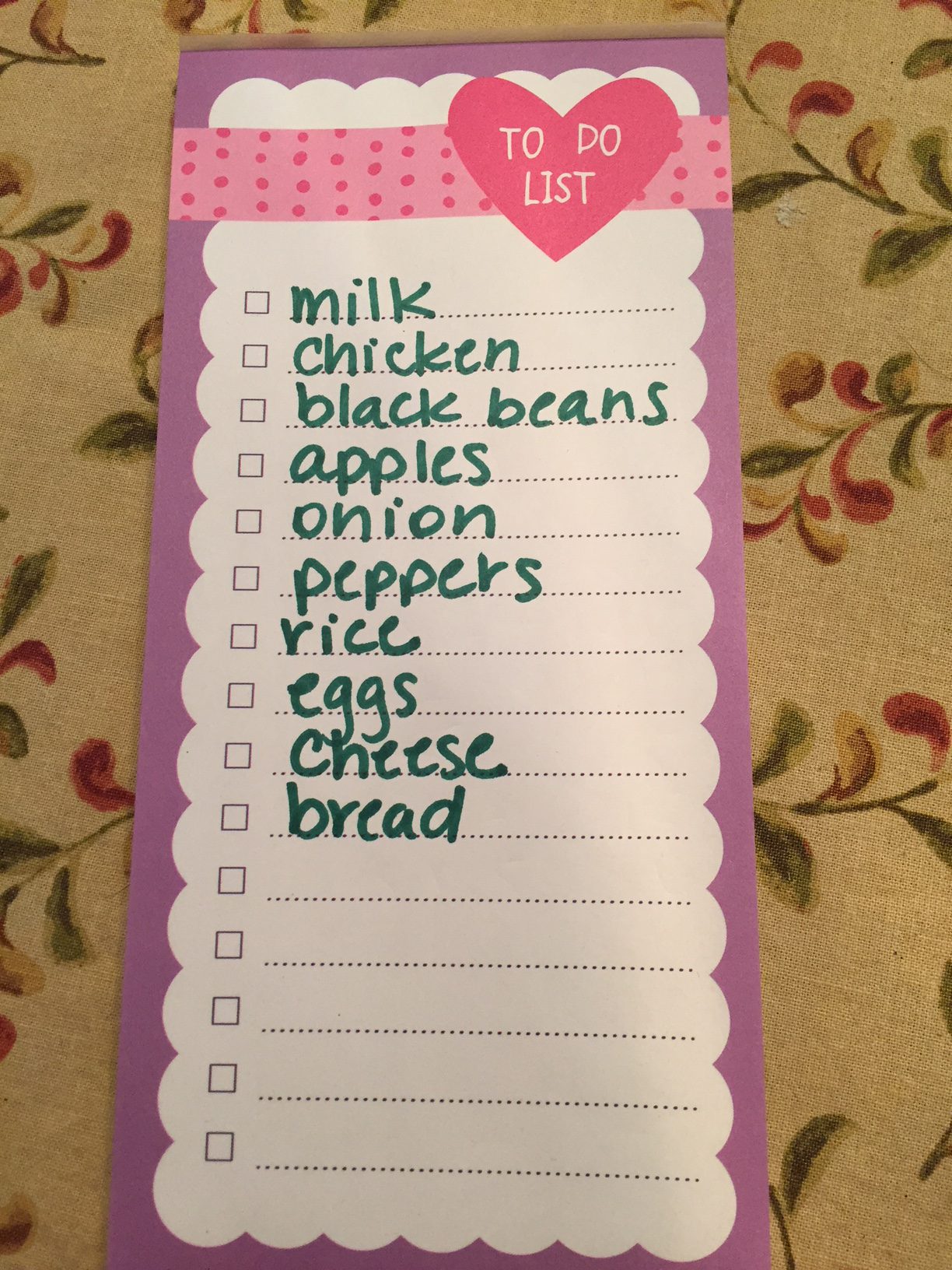
by Kendra Hughson | Jan 19, 2018
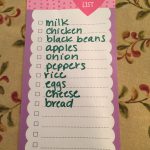
Create a shopping list using a weekly meal plan and what you already have on hand. Photo credit: Kendra Zamojski
Grocery shopping is probably one of my least favorite weekly chores. I have a family of picky eaters and it’s difficult to find healthy meals that please everyone. I can think of a million ways I’d rather spend my time than navigating the aisles of a crowded grocery store and standing in a long check-out line surrounded by countless “closed” registers. Why aren’t there ever enough open check-out lines?
I must not be alone. I hear more and more friends choosing stores with curbside pick-up service or online grocery shopping services. Many of the major grocery store chains are testing curbside pick-up service; you’ll need to check with your local store to see if this option is available in your area. Online delivery services like Shipt and Instacart may be available if curbside service isn’t an option at your local grocery store.
If you choose to do your grocery shopping online, be sure to shop around and pay attention to and compare item prices, delivery or pick up fees, membership fees, shopper or delivery tips, and other convenience fees. Regardless of your selected service, there is an extra cost for this convenience.
No matter how you choose to buy your groceries, all of the old rules apply:
Plan your weekly meals. Write some weekly meal plans with your schedule in mind. Choose some meals using recipes that are quick and easy to prepare for busy days. Use the USDA Game Plan to help you.
Find easy to prepare, healthy recipes. Use the USDA What’s Cooking website to find healthy recipes.
Know your food budget. Planning and cooking meals at home saves money over eating out. Meals prepared at home often are healthier, especially if you are preparing recipes low in fat and sodium. Track your food dollars to see how much you are spending and saving.
Plan to use leftovers. Make double batches of soups and stews, setting aside some to freeze for later use. Freeze leftovers in single portions to use for lunch or your own ready-to-eat freezer meals throughout the week.
Pack your meals with fruits and vegetables. Plan ahead to make half of your plate fruits and vegetables. Buy fresh fruits and vegetables in season. Buying canned and frozen fruits and vegetables can save money but watch for added fat, sugar, or sodium. Bananas, carrots, greens, potatoes, and apples are low-cost options year ’round.
Create your shopping list – and stick to it! Use your meal plan to create a shopping list. Remember to check what you already have on hand. Avoid impulse items and convenience items, which can add to your food costs. A list helps you organize the items you need to buy and helps you avoid impulse buys or unneeded items that can add to your food costs.
For more information on creating healthy meals, contact your local Extension office. UF/IFAS Extension also has this great publication on Healthy Meal Plans.

by Kendra Hughson | Aug 16, 2017
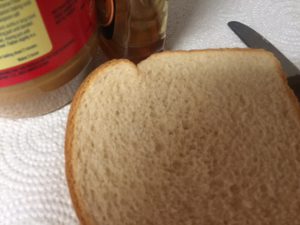
Jazz up traditional peanut butter sandwiches with raisins or carrot straws.
Now that school is back in session, are your struggling to find healthy and safe lunches to pack? Do you cringe with every peanut butter and jelly sandwich you make? If you are like me, finding healthy lunch time meals that are packed with nutrition, offer some variety, and won’t end up in the trash requires planning, creativity, and lots of energy!
- Get children involved! Even young school-age children can help make their own lunch. Give children healthy choices and let them decide lunch menus. Children may be more willing to eat the food you pack if they have been involved in the process.
- Dunk it and dip it. Children love finger foods they can dip. Serve raw vegetables with hummus or fresh fruit with yogurt.
- Offer some “fun foods.” Let children choose some low-calorie fun foods. Healthy or low-calorie options for the sweet or crunchy tooth include pretzels, plain popcorn, mini rice cakes, low-fat pudding, a miniature chocolate bar, or a rice crispy treat.
- Jazz up boring favorites. Peanut butter and jelly sandwiches are a nutritious favorite. Liven them up with carrot straws or raisins. Add color and nutrition to sandwiches with lettuce, tomato, or sliced vegetables.
- Keep lunches safe. Make sandwiches the night before and freeze them. Freeze juice boxes or water bottles to keep foods cool and for a cool lunchtime beverage. Experiment to be sure there is enough time before lunch for the items to thaw.
- Re-think leftovers. Even if children don’t have access to a microwave to reheat food from last night’s dinner, some leftovers work for lunch, too. Try cold pizza, meat sliced for a sandwich, or pasta salad.
- Skip the fuss and sign up for the National School Lunch Program. While some schools may offer free and reduced-price lunches to eligible families, the school lunch program is for everyone. School lunches provide low cost, balanced meals that follow USDA dietary guidelines. Take a break from packing lunch and check out your school’s lunch menu.
Turkey Rolls:
2 flour tortillas
2 tsp mayonnaise
2 slices thinly sliced deli turkey
½ cup shredded lettuce
2 Tbsp shredded cheese, any type
Lay out tortillas. Spread with mayonnaise. Layer turkey slice, lettuce and cheese onto tortillas. Roll up and wrap. Makes 2 servings.
One serving provides 218 calories, 9 g total fat, 20 g carbohydrate and 14 g protein.
Exchanges – 1 bread, 2 meats, 2 fats.
Recipe source: Janis G. Hunter, HGIC Nutrition Specialist, and Katherine L. Cason, Professor, Department of Food, Nutrition, and Packaging Sciences, Clemson University, New 08/08. Revised 09/11. Image added 8/15. HGIC 4114

by Kendra Hughson | May 5, 2017

Family rituals and traditions, like family vacations, make lasting memories.
This will be my sixth Mother’s Day, so I am not an experienced mother by any stretch of the imagination. As a Family and Consumer Sciences Extension Agent, I am fortunate to have plenty of coursework and some practical experience in working with children– but real life is different. Here are a few of the things I have learned – from coursework and just a little bit of experience:
Every stage of childhood brings a new joy and a new challenge. Understanding child development can help parents know what to expect and how to handle challenges. Extension is a great resource for child development. We have fact sheets on all ages and stages of development. You can find them in our Electronic Data Information Source (EDIS) publications. Search them here: http://edis.ifas.ufl.edu/topic_child_development
Finding effective discipline techniques and sticking to them also is a challenge. Children need consistency. I have found that focusing on good behavior and having clear, consistent rules makes life much more peaceful. Now that my child is in school, we use a simple chart with just two or three items and use colored dots, similar to what my daughter is used to in school. This keeps it consistent and focused on the positive behaviors I want to see. My daughter is excited to earn privileges and the reward of good behavior dots or stickers. Our UF/IFAS Extension site has some great ideas for discipline too. Find them here: discipline resources.
Children need routines. I think adults do, too. Having a routine and sticking to it helps children know what to expect. Those family rituals and traditions are just as important for building family stability and a sense of belonging. They make for great family memories! Don’t forget to make time for bedtime stories, making cookies, or for family celebrations, like Mother’s Day.
I am not an expert at parenting. I have made mistakes, some big, some little. When I do need expert advice, I go back to what I have learned from my work in Extension. Extension has all the research-based information you can trust on parenting and a variety of other topics. Check it out: edis.ifas.ufl.edu.
by Kendra Hughson | Jan 8, 2014
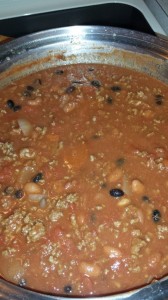
Soup is a great way to pack your diet with vegetables.
Nothing tastes as good on a cold, winter day as a nice hot bowl of soup. Soups are easy to make and economical. Homemade soups are healthy. They are a great way to pack more vegetables into your diet. You can control the amount of sodium by making your own broth or white sauce or by choosing canned broth and vegetables low in sodium. Use herbs and spices for flavor instead of salt. Be creative – there are endless possible combinations of ingredients that will make a delicious soup.
Soup is easy to freeze for later use: freeze your soup in zipper style freezer bags. You can use the large bags to freeze a family size portion of soup or you can use small bags to make handy individual servings of soup. Freeze bags of soup on a plate to prevent the bags from freezing around the rack making it difficult to remove later. Run the bag under cold water until thawed enough to slip into a bowl or pot for further heating on the stove or in the microwave. You can also freeze soup in plastic or glass food grade, freezer safe containers. Be sure to leave about a half-inch of space at the top to give the soup room to expand when it freezes. Thaw in the refrigerator or run the bottom of the container under cold water until you can pop it out and place in another bowl or pot for further heating.
Here are a few common types of soup for inspiration:
Chili – the origins of chili con carne, or chili with meat, are a little mysterious and highly debated. San Antonio made this spicy dish popular more than 100 years ago. Chili consists of thick meat (pork, chicken, beef, or wild game) and/or cooked dried beans in many variations. Chili with only beans is known as chili con frijoles.
Chowder is a seafood or vegetable stew originating from New England. A New England chowder is recognized by a creamy milk base, whereas a Manhattan chowder boasts a flavorful and less fattening tomato base.
Creams and Purees consist of milk, cream, broth, and/or vegetable purees. Puree vegetables using a food processor, blender, immersion blender, or food mill. Reduce the amount of fat and calories in cream based soups by choosing lower fat alternatives like 2% milk or by using pureed white beans to thicken the soup.
Gumbo originated in southern Louisiana in the 18th century. Highly seasoned and spicy, this stew like dish blends a variety of cultures including French, Spanish, Choctaw, and West African. Gumbo is thickened with okra, file´ powder(dried and ground sassafras leaves, pronounced fee-lay), or roux (a French base made of oil and flour).
Brunswick Stew
1 tablespoon vegetable oil
1 medium chopped onion
1/2 cup chopped pepper – red, green, or a combination (optional)
2 cups chicken broth, low sodium
1/2 teaspoon dried leaf thyme
1/4 teaspoon black pepper
2 cups cooked, diced, and boned chicken or turkey
2 cups tomatoes, canned or cooked
2 cups cooked dry beans OR 1 (15.5 ounce) can beans (drained), such as red beans or Great Northern beans, etc.
2 cups whole kernel corn, frozen or 1 (15.5 ounce) can corn, canned without salt (drained)
Directions:
- Heat oil in a large pan. Add onion and cook in oil until tender.
- Add all remaining ingredients, except salt and pepper. Bring to a simmer and cook, covered, for 30 minutes on medium-low heat.
- Season to taste with salt, if desired.
Recipe Source: Adapted from Virginia Cooperative Extension
For more information on soups, contact UF IFAS Extension Leon County at 850-606-5200 or hughson@ufl.edu.
by Kendra Hughson | Aug 9, 2013
Arriving home after work, the race against the clock begins. I have only two hours to get dinner on the table and to get my family fed, bathed, and in bed. But, what do I make for dinner? I need something that is quick, easy, and my family will eat.
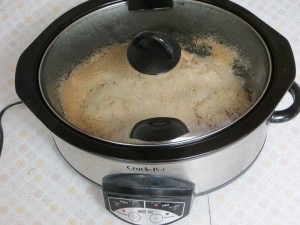
Use a slow cooker to have dinner ready when you get home.
Preparing healthy meals at home doesn’t need to take a lot of time. Planning will go a long way to help save you time. Good nutrition doesn’t just happen; you have to plan for it. Start by creating a weekly meal calendar and shopping list. This will help you save time and money. For mealtime emergencies, keep a well-stocked pantry and plenty of frozen fruits and vegetable on hand in the freezer.
- Choose foods with faster cooking times: ground meat, tender cuts, chops, or fish. Vegetables and meat cut into small pieces will cook very quickly in a stir-fry. Canned and frozen vegetables make quick side dishes.
- Make extra food when you have time. On weekends, make double or triple batches to stock your freezer with main dishes. Soups, sauces, and casseroles work well to freeze for later use. Cook dried beans, meat, and pasta to freeze for use in meals during the week.
- One-dish meals like fajitas, salads, sandwiches, and casseroles are a great way to include a variety of nutritious foods at dinner time. Use a slow cooker to have dinner ready when you get home. One-dish meals save time on clean-up, too.
- Save time and money by incorporating “planned-overs” into your menus. Pack leftovers for lunches the next day. Use leftover chicken in salads, soups, quesadillas, or pasta dishes.
Preparing healthy meals may take some planning and effort but can be quick and easy. Now, if I could just figure out what to do about my picky eater…
To learn more about healthy cooking, sign up for the Fabulous Foods cooking series beginning in August. For more information about the cooking class or making healthy meals, contact the UF/IFAS Leon County Extension office at 850-606-5200 or contact Kendra Zamojski at Hughson@ufl.edu
_________________________________
Create Your Own Casserole or One-Dish Meal:
It is easy to make a casserole or one-dish meal with items that you have on hand. Choose one or more ingredient(s) from each of the following categories:
- 1½ to 2 cups cooked or canned meat, chicken, fish, eggs, dried beans, peas
- 1½ cups vegetables (e.g. tomatoes, green beans, potatoes, broccoli, peas, cabbage)
- 1 to 1½ cups cubed bread, cooked rice, or pasta
- 1 to 1½ cups liquid ingredients (e.g. cream soup, tomato soup or sauce, cheese sauce, white sauce, evaporated milk, or shredded cheese plus milk)
- Other optional ingredients for flavor (e.g. onion, spices, herbs)
Mix ingredients thoroughly and cook in the oven or on the stove top. If you cook in the oven, place the ingredients in a covered casserole dish and add optional toppings, such as bread crumbs, cracker crumbs, or Parmesan cheese. Bake at 350°F for 45 minutes. Uncover the last 15 minutes to brown the topping. Serve hot.
If you cook this one-dish meal on the stove top, place the ingredients in a large skillet. Simmer until bubbly. An optional topping of Parmesan cheese or croutons can be added to each serving. Serve hot.








